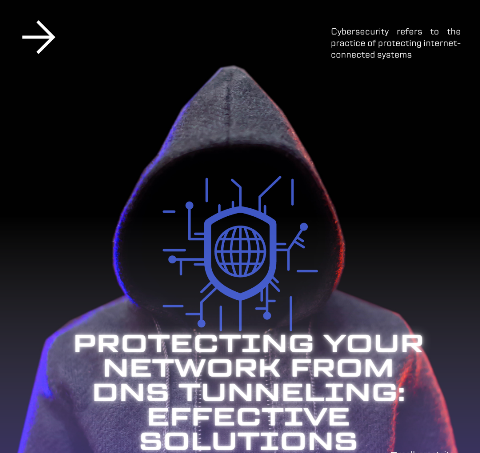Introduction
As the threat of DNS tunneling looms over organizations, it becomes imperative to implement robust measures to safeguard network infrastructure from this stealthy technique. By adopting a multi-layered approach and leveraging advanced security solutions, you can fortify your network defenses and mitigate the risks associated with DNS tunneling. In this article, we explore some effective solutions that can help protect your network from this emerging threat.
1. DNS Firewall
Implementing a DNS firewall is a crucial step in defending against DNS tunnelling attacks. A DNS firewall acts as a protective barrier, analysing DNS traffic and blocking malicious requests. It can detect and block DNS tunnelling attempts by monitoring DNS packets for suspicious patterns, unauthorized data transfers, or abnormal behaviour. By enforcing strict policies and rules, a DNS firewall can effectively filter out malicious DNS traffic, preventing unauthorized data exfiltration and command-and-control communication.
2. Intrusion Detection and Prevention Systems (IDPS)
Deploying an Intrusion Detection and Prevention System (IDPS) is an essential component of network security. An IDPS continuously monitors network traffic and can identify potential instances of DNS tunnelling based on predefined signatures and behavioural analysis. When an IDPS detects suspicious DNS activity, it can take proactive measures such as alerting security personnel, blocking the traffic, or initiating automated mitigation actions. Integrating IDPS capabilities into your network security infrastructure can significantly enhance your ability to detect and respond to DNS tunnelling attacks.
3. Deep Packet Inspection (DPI)
Deep Packet Inspection (DPI) technology plays a crucial role in detecting and mitigating DNS tunnelling. DPI enables the thorough examination of the contents of DNS packets, allowing security systems to identify anomalies or unauthorized data within the packets. By leveraging DPI, organizations can apply granular inspection techniques and pattern recognition algorithms to uncover covert DNS tunnelling activities. DPI can be deployed as a standalone solution or integrated into existing security appliances to provide enhanced protection against DNS tunnelling.
4. Threat Intelligence and Analytics
Leveraging threat intelligence and analytics can significantly enhance your organization’s ability to identify and respond to DNS tunnelling threats. By staying up-to-date with the latest threat intelligence feeds and indicators of compromise (IOCs), you can proactively detect and block DNS tunnelling attempts. Advanced analytics platforms can process vast amounts of network data in real-time, enabling the identification of suspicious DNS patterns and facilitating timely response and remediation.
5. Regular Patching and Updates
Keeping your network infrastructure up to date with the latest patches and security updates is crucial for preventing DNS tunnelling attacks. Cybercriminals often exploit vulnerabilities in DNS servers and other network components to facilitate tunnelling activities. By promptly applying patches and updates, you can address these vulnerabilities and reduce the risk of successful DNS tunnelling attacks.
6. Employee Education and Awareness
The human factor remains a critical aspect of network security. Educating employees about the risks associated with DNS tunnelling and providing awareness training can significantly strengthen your overall security posture. Employees should be trained to recognize suspicious DNS activities, understand the importance of following security policies and procedures, and report any anomalies to the IT or security teams promptly.
Conclusion
Protecting your network from DNS tunnelling requires a proactive and comprehensive approach. By deploying robust security solutions such as DNS firewalls, IDPS, DPI, threat intelligence, and analytics, combined with regular patching and employee education, you can significantly enhance your network’s resilience against DNS tunnelling attacks. As cyber threats continue to evolve, staying informed, and adapting your security measures accordingly is crucial in maintaining a secure and reliable network infrastructure.
